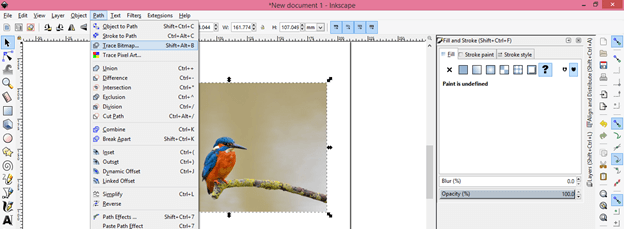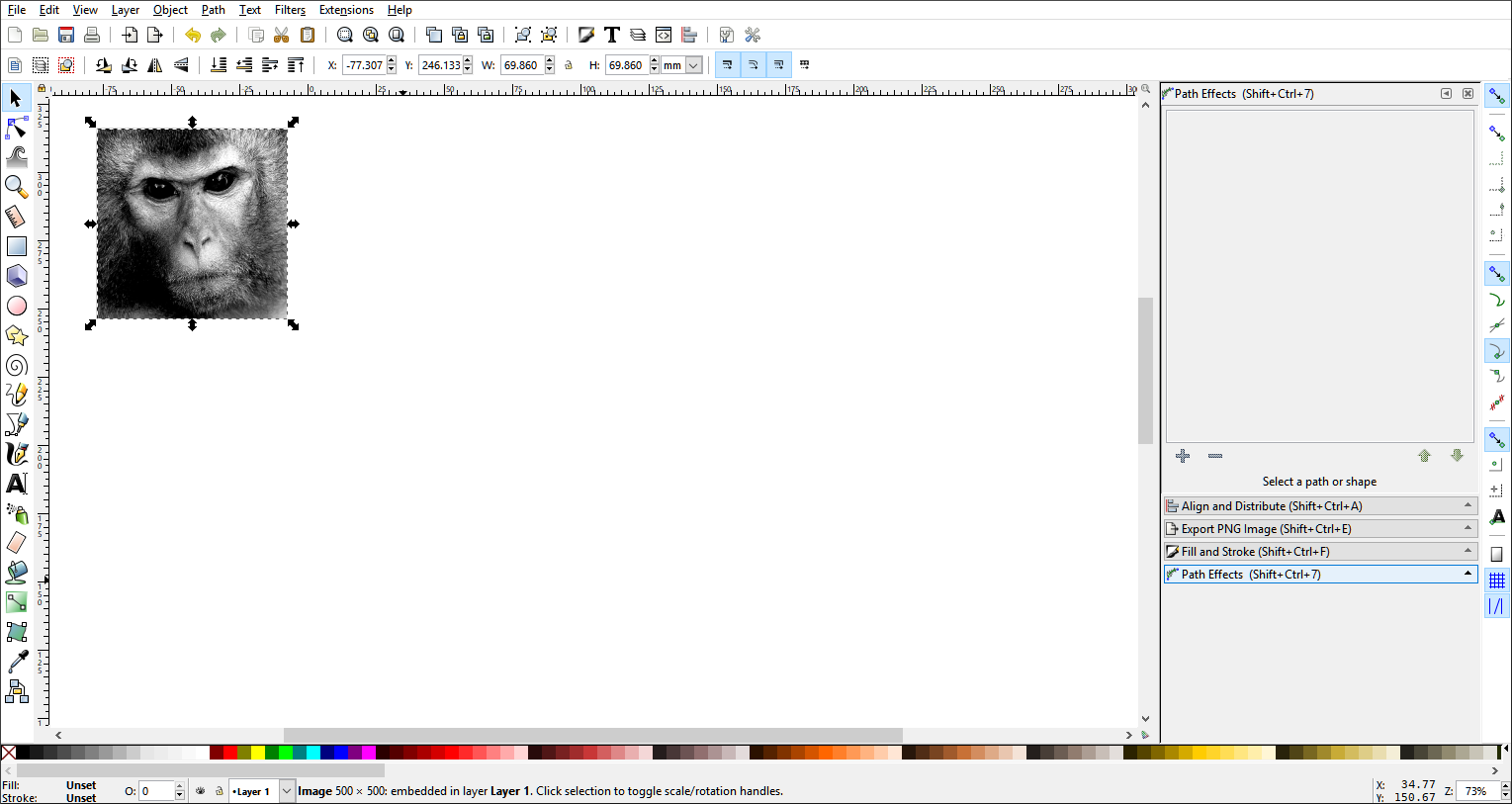

- #Inkscape trace bitmap still filled in manual#
- #Inkscape trace bitmap still filled in full#
- #Inkscape trace bitmap still filled in code#
- #Inkscape trace bitmap still filled in windows#
Object > Clip > Release Clip What If This Doesn’t Work?Īlthough Inkscape can be used to delete backgrounds from images that are simple or well-defined, Inkscape won’t always be the best tool to use based on the image. Exporting as JPEG will cause the background to be white as it does not support transparency.Ĭlipping masks are non-destructive, so if you want to restore the background at any point, all you have to do is select the image and go to: You can now export it as a PNG image with a transparent background. Once selected, your image will only be visible in the area where the path is, meaning the background will effectively be gone: This can be done by clicking and dragging a bounding box around each or by clicking on each while holding the Shift key. To do so, select both the path and the image at the same time. Now that your path is drawn you can use it as a clipping mask to remove the background from the image. Step 3: Use the path you’ve drawn as a clipping mask for the image This is the most difficult step in the lesson, so if you’re struggling to catch the hang of it then it is recommended that you watch the video tutorial above. You should now have a vector path outlining your subject: Tip: reducing the opacity of the image will help you see the path more clearly. If at any point you need the path to be straight, or you need to create a point that is a corner, simply hold the Shift key while clicking to add your point.įinish drawing your path around the subject and close the path by clicking on the original point. The lines you draw will automatically be smooth.

As you add points, a line will be drawn connecting them. With the Bezier Pen selected, begin clicking to add points around the subject of your image.

Now it’s time to draw a path that outlines the subject of your image. Step 2: Click to add points around the subject of the image It is sort of like training wheels for the Bezier Pen. In anything other than centerline tracing mode, Bitmap tracing will produce a closed path.This setting makes it easiest to draw basic paths.
#Inkscape trace bitmap still filled in code#
Even though your image may, to you, seem to be made up of individual lines, to the tracing code they're thick shapes to be traced around. Consider tracing a filled rectangle - you would expect to get a filled path as a result.
#Inkscape trace bitmap still filled in windows#
During processing the GUI will indeed be locked, Windows might report Inkscape as 'nor responding' if you try to interact with it during this time. Now mentally make that rectangle thinner and thinner, until it's the thickness of a pen or pencil stroke - it still gets traced as a filled path. The problem with double lines is probably that your path has a stroke but no fill. Going back to the thin rectangle above, you can see how this would result in a shape that has two lines close together. Turning off the stroke and setting a fill might be all you need to do, depending on your use for the traced shape.Īs to the white border around the filled colour - that's nothing to do with the bitmap tracing process, and everything to do with the bucket fill tool. Try increasing the Grow/shrink parameter, but this tool always struggles with sharp corners. Generally the bucket tool is not a good choice - it should usually be one of the last things in your arsenal - but for filling a traced bitmap the only other practical alternative is manually drawing the shapes in a layer below the traced bitmap. Use the Bezier tool to closely trace the bitmap with straight lines.

#Inkscape trace bitmap still filled in full#
This is a subject I cover in some detail in my tutorial series in Full Circle Magazine (free download) - though it predates the addition of centerline tracing, and the layout of the Trace Bitmap dialog has changed somewhat in 1.0. Simplify the model (Path -> Simplify or Ctrl+L) a few times. Select all Nodes (Ctrl+A) and click 'smooth lines' at the top Manually move some nodes, bezier handles to correct small errors.
#Inkscape trace bitmap still filled in manual#
The Trace Bitmap and Bucket Fill tools are described in parts 79-81, but I recommend starting from part 76 where I also show some manual tracing techniques.


 0 kommentar(er)
0 kommentar(er)
